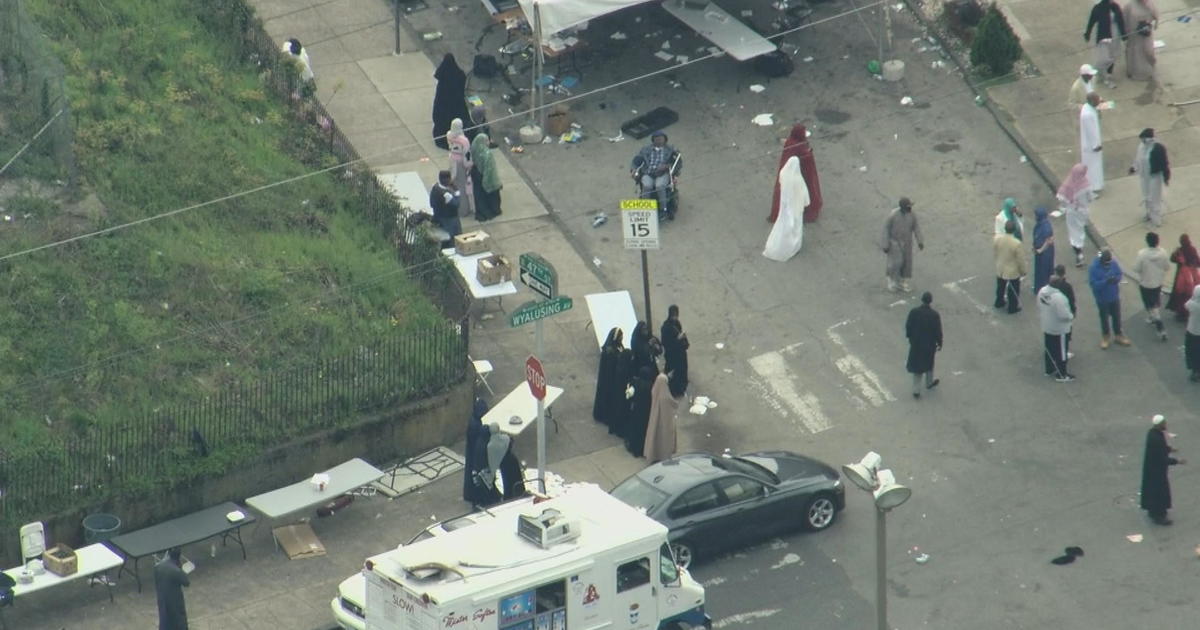Campaign Under Way To Save Philadelphia's Police Headquarters
PHILADELPHIA (AP) - In this Colonial-era city that adores its brick-and-cobblestone neighborhoods, the Roundhouse has always been a square peg.
The curvilinear landmark from 1963, officially named the Police Administration Building and situated near Chinatown, is one that many Philadelphians love to hate. Now, city planners are sketching out a plan for the near future would wipe the Roundhouse off the map.
The police department is bursting at the seams inside the Roundhouse and plans are afoot to relocate across town into a stately 87-year-old insurance building vacant for two decades. There's no timetable for the move but fans of the Roundhouse have already started a grassroots campaign to preserve the modernist landmark.
"It's an awkward phase where it's too new to be considered historic and too old to be considered useful," said Ben Leech of the Preservation Alliance for Greater Philadelphia, which placed the Roundhouse on its most endangered properties list.
The organization is also working with the group Save the Roundhouse, created by University of Pennsylvania historical preservation graduate students Kimber VanSant and Allee Berger. Their Facebook page includes photos from the maligned building's heyday and updates on its plight.
"It's a fascinating story because it came at a time when the city was revolutionizing, reinventing itself," Berger said. "It just screams 'important.' It's significant and if we were to demolish it, then we wouldn't have that pertinent link in Philadelphia's history anymore."
The Roundhouse was designed by architectural firm Geddes, Brecher, Qualls and Cunningham of the fabled Philadelphia School, whose ranks also included Louis Kahn and Robert Venturi. The structural engineer was August Komendant, a longtime collaborator of Kahn's.
About 140 pre-cast concrete panels were assembled on site in two circular shapes connected by a bridge - leading locals to incorrectly assume the Roundhouse was made to resemble handcuffs - and the inside walls follow the curved exterior. It was only the second building in the U.S. to use a groundbreaking construction system by Dutch company Schockbeton, which created a stronger and more graceful facade than its concrete cousins.
Often misidentified as Brutalist architecture, it lacks that style's rough, angular traits. It has more in common with Marcel Breuer's equally unpopular Housing and Urban Development headquarters in Washington and Eero Saarinen's iconic T.W.A. Flight Center at New York's Kennedy Airport, Berger said.
"It's an important example of the role of evolving building technology and its relationship to architectural design and form," said Georgia Tech professor Jack Pyburn, whose architectural design students are studying the Roundhouse and investigating potential reuses with the Penn students.
Though often perceived today as imposing and grim, the building was designed with noble ideals in mind. Mayor Richardson Dilworth was a reformer who sought to move the police department from its headquarters in City Hall, which had come to symbolize corruption and cronyism.
"The Roundhouse was an expression of a new progressive era in city government," Pyburn said. "The idea was to get the police department out of City Hall and into the community to become more of a public service."
It instead became negatively associated with the 1970s tenure of the late Mayor Frank Rizzo, a law-and-order hardliner who remains a polarizing figure in Philadelphia.
Also working against the Roundhouse is the concrete facade, which is stained with 50 years of pollution and car exhaust. It also sits on land that's attractive to developers; that wasn't the case when it was built on a former skid row a half-century ago.
The city is currently not considering reuses for the Roundhouse. The Planning Commission's just-released "Philadelphia 2035" report categorizes the site as "likely for redevelopment" and features a rendering of a generic brick structure in its place.
VanSant said that when the report was released, the building was inaccurately described as being in poor condition with leaks and cracks in the facade. Though crammed with twice the occupancy originally intended, it's not a suitable home for the police department but it is structurally sound and an excellent candidate for reuse, she said.
"Combating perceptions is a big part of this," VanSant said. "It's being labeled a dump, but in reality the problems are overcrowding and temperature problems that are the result of overcrowding."
The Roundhouse's precarious circumstance is far from unique.
Buildings of its style and vintage currently or formerly at risk include the Orange County Government Center in Goshen, N.Y., Prentice Women's Hospital in Chicago and the Morris Mechanic Theatre in Baltimore. Preservationists in Gettysburg lost a 14-year battle to save the Cyclorama building by Richard Neutra, and demolition is under way.
Tastes and styles change over time, Pyburn said, and today's beloved Victorian and Gothic Revival buildings went through their own ugly-duckling phases. Philadelphia's iconic City Hall was itself targeted for demolition in the 1950s.
"There's always a period between something being current and it being understood," Pyburn said. "You have to think two generations in the future."
(© Copyright 2013 The Associated Press. All Rights Reserved. This material may not be published, broadcast, rewritten or redistributed.)



